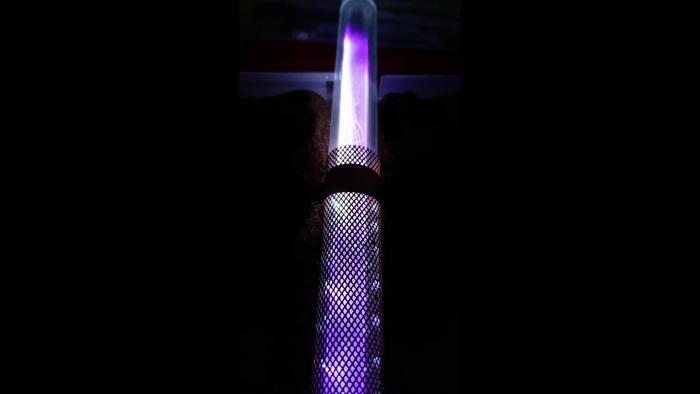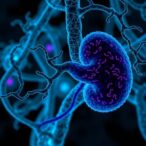
In a groundbreaking stride toward sustainable chemical manufacturing, researchers at the University of Sydney have unveiled an innovative plasma-driven method for producing ammonia—a chemical cornerstone that underpins much of the global food supply and numerous industrial processes. Traditionally synthesized via the century-old Haber-Bosch process, ammonia production today accounts for significant carbon emissions and demands high energy consumption, relying heavily on fossil fuels and substantial centralized infrastructure. This new approach harnesses human-made lightning-like plasma to stimulate air molecules, revolutionizing the pathway to what is being termed “green ammonia.”
Ammonia (NH₃) is vital not only because it serves as the primary ingredient in fertilisers feeding nearly half of the world’s population but also because its molecular structure—comprising three hydrogen atoms bonded to nitrogen—offers versatile applications in energy storage and transport. Unlike conventional efforts that produced ammonia dissolved in liquid form (ammonium, NH₄⁺), the University of Sydney team’s method achieves direct generation of ammonia gas, thus eliminating cumbersome steps and energy-intensive conversion processes traditionally required to extract usable gaseous ammonia.
The Haber-Bosch process, since its invention in the early 20th century, has been the backbone of global ammonia production. It operates by combining nitrogen and hydrogen gases at extremely high temperatures and pressures in the presence of catalysts. While transformative and pivotal for the modern agricultural revolution, this method involves significant carbon footprints and is economically feasible only at large scales near cheap natural gas sources. The environmental urgency to devise alternative methods capable of decentralised, scalable ammonia production has spurred extensive scientific pursuit worldwide.
.adsslot_HeXsv3Y8p0{width:728px !important;height:90px !important;}
@media(max-width:1199px){ .adsslot_HeXsv3Y8p0{width:468px !important;height:60px !important;}
}
@media(max-width:767px){ .adsslot_HeXsv3Y8p0{width:320px !important;height:50px !important;}
}
ADVERTISEMENT
Professor PJ Cullen and colleagues from the University of Sydney’s School of Chemical and Biomolecular Engineering and Net Zero Institute have been engaged in this ambitious endeavour for over six years. Their research, recently published in Angewandte Chemie International Edition, introduces a plasma-based technique where electricity excites ambient air molecules, effectively mimicking the energetic conditions of lightning but in a controlled system. This plasma activates nitrogen and oxygen molecules, which—in a subsequent step—are converted into ammonia gas within a membrane-based electrolyser, a modestly sized silver device integral to the process.
The electrolyser operates by facilitating electrochemical reactions, selectively reducing nitrogen species while facilitating hydrogen incorporation, all within a carefully engineered membrane environment. The exciting discovery here lies in the synergy between plasma activation and electrolysis, creating a two-step process that streamlines ammonia synthesis directly from air, bypassing the conventional requirement of molecular hydrogen as a feedstock. This approach holds promise for dramatically reducing energy inputs and CO₂ emissions associated with ammonia manufacture.
One of the compelling implications of this process is its potential to decentralize ammonia production. Traditional plants consume vast resources and produce ammonia at large scales, necessitating extensive transport and storage logistics that further increase environmental and economic costs. The University of Sydney’s plasma-to-electrolyser configuration, being more compact and operable at ambient conditions, could empower localized ammonia generation, particularly benefiting agricultural communities and industries in remote or energy-constrained regions.
Beyond agriculture, ammonia’s relevance extends into the future of clean energy. Due to its high hydrogen content, ammonia can act as a hydrogen carrier, offering a stable and energy-dense medium for storage and transport. Industry stakeholders can “crack” ammonia molecules to release hydrogen for fuel cells or combustion, potentially leapfrogging many current challenges in hydrogen infrastructure. Furthermore, ammonia itself stands as a promising carbon-free fuel candidate, capturing the interest of sectors like maritime shipping responsible for substantial global greenhouse gas emissions.
The research team emphasizes that while the plasma component of their system has reached a level of energy efficiency and scalability considered commercially viable, the electrolyser efficiency must be improved for holistic competitiveness with the Haber-Bosch regime. Refining the electrochemical interfaces and materials that facilitate nitrogen reduction remains a focal point of their ongoing development efforts. Such advancements would lower the overall energy consumption and operational costs, accelerating green ammonia’s industrial adoption.
Fundamentally, this plasma-driven ammonia synthesis challenges preconceived limitations of chemical catalysis and process design. The controlled excitation of atmospheric constituents introduces reactive species otherwise unattainable under mild conditions, potentially unlocking novel catalytic pathways while simultaneously incorporating renewable electricity. This paradigm shift exemplifies how interdisciplinary innovation—bridging plasma physics, electrochemistry, and materials engineering—can forge new routes toward sustainable industrial chemistry.
Professor Cullen notes the broader impact of this technology extends into both environmental and socioeconomic realms. The democratization of ammonia production aligns with global net-zero ambitions and food security imperatives, especially in a world increasingly strained by climate instability. If successfully scaled beyond laboratory prototypes, plasma-driven, green ammonia synthesis could redefine fertilizer supply chains, reduce fossil fuel dependency, and foster resilient agriculture aligned with climate justice.
The research findings, detailed under the title “Regulating Multifunctional Oxygen Vacancies for Plasma-Driven Air-to-Ammonia Conversion,” are published in the prestigious journal Angewandte Chemie International Edition. The study encompasses a rigorous experimental framework, including precise regulation of oxygen vacancies in catalytic materials, which are critical for enhancing plasma-electrolyser coupling and boosting ammonia yield. These materials innovations offer insights not only into ammonia synthesis but also inform next-generation catalysts pertinent to various energy conversion processes.
While commercial interests are acknowledged, with certain researchers affiliated with PlasmaLeap Technologies, the plasma technology used in this study is distinct and developed independently within the university’s research environment. This underscores the commitment to objective, foundational scientific exploration while simultaneously paving avenues for future industry collaboration.
As the global community accelerates toward sustainable energy and chemical production pathways, the University of Sydney’s plasma-powered green ammonia breakthrough constitutes a beacon of possibility—illuminating an alternative future where electricity, air, and innovative engineering converge to meet humanity’s pressing agricultural and energy demands with significantly reduced ecological footprints.
Subject of Research: Not applicable
Article Title: Regulating Multifunctional Oxygen Vacancies for Plasma-Driven Air-to-Ammonia Conversion
Web References:
https://doi.org/10.1002/anie.202508240
References:
Angewandte Chemie International Edition, DOI: 10.1002/anie.202508240
Image Credits: PJ Cullen / Plasmaleap
Keywords:
Alternative energy, Renewable energy, Fuel, Energy resources, Agriculture, Engineering, Agricultural engineering, Chemical engineering, Physical sciences, Biochemical engineering, Hydrogen storage, Ammonia, Aerospace engineering
Tags: ammonia as a renewable energy sourcedirect generation of ammonia gasenergy-efficient fertilizer productiongreen ammonia technologyHaber-Bosch process alternativesinnovative energy solutions for ammonianitrogen fixation advancementsplasma-driven ammonia synthesisreducing carbon emissions in agriculturesustainable ammonia productionsustainable chemical manufacturing methodsUniversity of Sydney research



